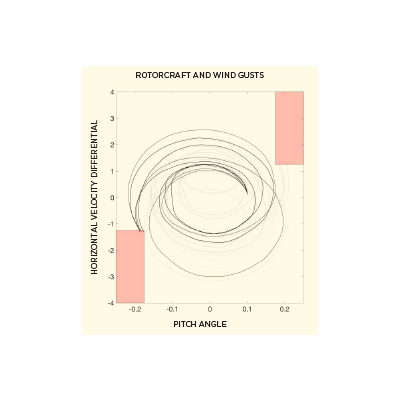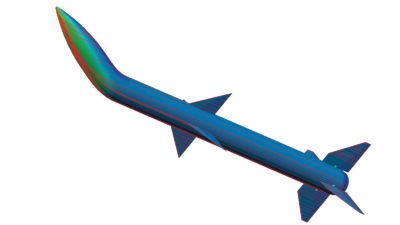Hypersonics, advanced materials and shockwaves
By James D. Walker, Nicholas J. Mueschke and Sidney Chocron|December 2022
The Weapon System Effectiveness Technical Committee advances the science and technology of predicting, measuring, evaluating and improving the lethality of weapon systems.
DARPA’s Hypersonic Air-breathing Weapon Concept program had two successful flight tests this year. The Raytheon-Northrop Grumman team conducted its second flight test of its HAWC vehicle in July, following a flight test in September 2021. The Lockheed Martin-Aerojet Rocketdyne team conducted its first flight test of its HAWC in April. DARPA requested $60 million in fiscal 2023 funds for a follow-on program intended to mature technologies developed in the HAWC program. In September, the U.S. Air Force awarded Raytheon a $985 million missile contract to develop and demonstrate prototypes of a Hypersonic Attack Cruise Missile. As of October, the Air Force was evaluating proposals for a new Expendable Hypersonic Multi-Mission ISR and Strike program — also known as Mayhem — and planned to issue a $334 million indefinite delivery/indefinite quantity contract by the end of the year.
Two of the U.S. military’s large boost glide development efforts met varied levels of success. A flight test of the Common Hypersonic Glide Body ended in another failure in June. The U.S. Navy plans to outfit Zumwalt-class destroyers with the Conventional Prompt Strike weapon systems, the Navy variant of the Long-Range Hypersonic Weapon, by 2025; work is ongoing for the ship launch system for the missile. The Air Force’s AGM-183A Air Launched Rapid Response Weapon completed two booster test flights in May and July, following three previous unsuccessful attempts. The Air Force moved fiscal 2023 funds for AGM-183A procurement to research and development following the testing hurdles. All-up-rounds are planned to test the full system late this year prior to future acquisition decisions.
In June, the U.S. Missile Defense Agency awarded Northrop Grumman and Raytheon teams contracts to mature designs for Glide Phase Interceptors, with the intention of reaching preliminary design reviews in fiscal 2027. The Next Generation Interceptor program, which is developing missiles to replace the current Ground-based Midcourse Defense system by 2027, also continued development after selecting two teams last year: a Northrop Grumman and Raytheon team and a Lockheed Martin and Aerojet Rocketdyne team. MDA also worked to increase the capability of lower-tier medium- and intermediate-range ballistic missile defense systems. In March, MDA tested the integration of two separate interceptor weapon systems. In Flight Test THAAD 21, the Terminal High Altitude Area Defense weapon system communicated with and launched two Patriot Advanced Capability-3 Missile Segment Enhanced interceptors that intercepted a Black Dagger target at White Sands Missile Range in New Mexico.
In parallel to the large procurement efforts from the Department of Defense, research programs focused on advancing the knowledge of missile subsystems and improving their manufacturability and performance. Battelle continued work on a $46.3 million Defense Department contract awarded in 2020 for MOC3HA, the Manufacturing of Carbon/Carbon Composites for Hypersonic Applications, an initiative to manufacture thermal protection materials for hypersonic weapons. Various laboratories continued efforts to better understand the behavior of reentry aerospace materials, including 2D and 3D carbon-carbon and carbon-phenolic composites, under extreme conditions of pressures and temperatures. Controlled laboratory impact tests of the composites under specified stress and temperature allowed determination of relevant subsystem properties as would be seen during extreme conditions such as hypersonic flight and terminal impact. Continuing this year, plate-impact tests, where a flat disk, or flyer plate, is accelerated and impacted on the material of interest at velocities from a few hundred meters per second to several kilometers per second, provided relevant material response data. These tests provide information on how shockwaves move through the materials. Advanced materials and models of material properties allows design of advanced weapons, including hypersonic systems.



































